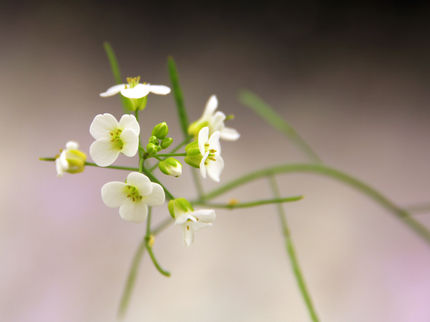'Extreme' genes shed light on origins of photosynthesis
oxygen, one of the by-products of photosynthesis by microbes such as cyanobacteria and their descendants (including algae and higher plants), transformed the Precambrian Earth and made possible the evolution of more complex organisms. With an $867,000 award from the National Science Foundation and the USDA National Institute of food and agriculture, Jeffrey Touchman, assistant professor in Arizona State University's School of Life Sciences, works to illuminate large gaps in the available genetic data for photosynthetic microbes through the study of phototrophic extremophiles. His research is focused on genome sequencing and molecular analyses of heliobacteria, proteobacteria and a cyanobacterium with the ability to shift into anoxygenic (oxygen-free) photosynthesis in the presence of sulfide, a possible evolutionary "missing link" between anoxygenic and oxygenic photosynthetic organisms.
"Knowing how photosynthesis originated and evolved is essential to obtaining the deep understanding required to yield improvements in bioenergy, agriculture and the environment," Touchman says.
Touchman, who is also an adjunct investigator at The Translational Genomics Research Institute (TGen), has chosen his photosynthetic, microbial partners carefully; each bears a unique metabolism, physiology or ecology and differs in fundamental ways from sequenced genomes of any other phototroph. Hidden in these organisms' various genetic codes may be hallmarks: traces of early evolutionary innovations pointing to the origin of oxygen-evolving high-energy photosynthesis.
There are important linkages between Touchman's work on earthbound origins and astrobiology as well. Phototrophic extremophiles are excellent model microbes for studies of interplanetary photosynthetic exchange, Touchman says. That is, exchange that might come about in stellar systems that have terrestrial-type rocky planets that could be capable of exchanging gneiss and rocky material. The arrival of oxygenic photosynthesis via transport of materials by external means, such as meteorites, could profoundly change the direction of biological evolution on a planet's surface.
Transpermia or rocky panspermia is the possibility of the exchange of micro-organisms between planets via impact material. Paul Davies, director of ASU's Beyond Center for Fundamental Concepts in Science, developed some of the thinking upon which Touchman's extraterrestrial pursuits are based: "some microorganisms can survive interplanetary journeys cocooned inside rocks blasted off planets by comet and asteroid impacts. That rocky panspermia is an effective mechanism for spreading life within a planetary system."
"Oxygen is a central biosignature or fingerprint of life sought in the atmospheric spectra of planets beyond our solar system," Touchman says. "Detailed molecular understanding of how photosynthetic microbes can push the boundaries of extreme-environment existence on our own planet will also fill important gaps in our current understanding of extra-terrestrial potential for oxygen-evolving photosynthesis."
Most read news
Topics
Organizations
Other news from the department science

Get the life science industry in your inbox
By submitting this form you agree that LUMITOS AG will send you the newsletter(s) selected above by email. Your data will not be passed on to third parties. Your data will be stored and processed in accordance with our data protection regulations. LUMITOS may contact you by email for the purpose of advertising or market and opinion surveys. You can revoke your consent at any time without giving reasons to LUMITOS AG, Ernst-Augustin-Str. 2, 12489 Berlin, Germany or by e-mail at revoke@lumitos.com with effect for the future. In addition, each email contains a link to unsubscribe from the corresponding newsletter.


















































